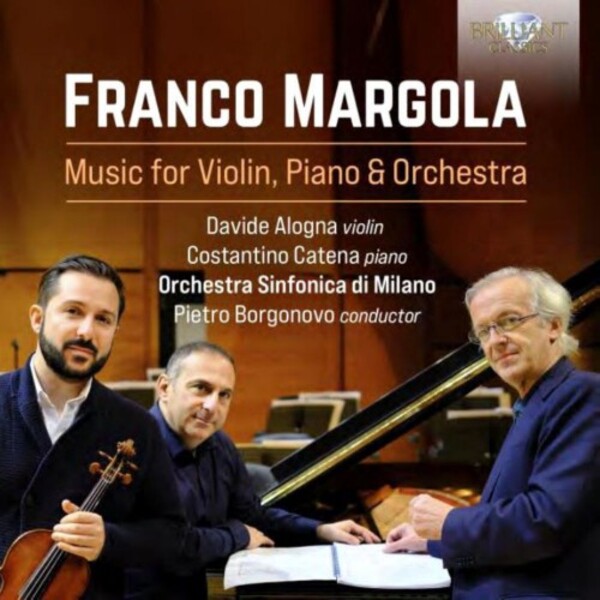
Margola - Music for Violin, Piano & Orchestra
£9.45
In stock - available for despatch within 1 working day
Despatch Information
This despatch estimate is based on information from both our own stock and the UK supplier's stock.
If ordering multiple items, we will aim to send everything together so the longest despatch estimate will apply to the complete order.
If you would rather receive certain items more quickly, please place them on a separate order.
If any unexpected delays occur, we will keep you informed of progress via email and not allow other items on the order to be held up.
If you would prefer to receive everything together regardless of any delay, please let us know via email.
Pre-orders will be despatched as close as possible to the release date.
Label: Brilliant Classics
Cat No: 96652
Format: CD
Number of Discs: 1
Release Date: 18th November 2022
Contents
Works
Concerto dell'alba, dC292Doppio concerto, dC132
Kinderkonzert no.2, dC109
Variazioni sopra un tema giocoso, dC143
Violin Sonata in D major, dC12
Artists
Davide Alogna (violin)Costantino Catena (piano)
Orchestra Sinfonica di Milano
Conductor
Pietro BorgonovoWorks
Concerto dell'alba, dC292Doppio concerto, dC132
Kinderkonzert no.2, dC109
Variazioni sopra un tema giocoso, dC143
Violin Sonata in D major, dC12
Artists
Davide Alogna (violin)Costantino Catena (piano)
Orchestra Sinfonica di Milano
Conductor
Pietro BorgonovoAbout
Kinderkonzert no.2 is a work for violin and orchestra (1954). In the first movement, the writing is fluid and melodious. Only during the cadenza does the atmosphere become more serious, and the lightness that characterised the entire movement is only rediscovered with the return of the full orchestra. The next movement, Sostenuto, has a dreamlike character that comes to life in the central section with dance-style music. In the final Allegro, the soloist’s part is characterised by brilliant virtuosic writing which fits well into the articulated orchestral texture.
Almost thirty years later, Margola wrote Concerto dell’alba for violin and string orchestra (1982). Intended to be the third of the Kinderkonzert, Concerto dell’alba sounds free from any form of modernism and cerebralism. Nevertheless, the composer uses a modern idiom with wisdom and discretion which creates a spontaneous musical eloquence and cantabile sound. A vigorous Rondò with lively popular tunes concludes the Concerto.
The composer proposed a decidedly neoclassical writing style in Variazioni sopra un tema giocoso (1965), placing well calibrated sounds within a formal structure. Also neoclassical, Sonata in D (1931) is the first of a series of five violin sonatas and reveals the composer’s technical mastery. In the first movement, two themes are alternated: one serious, and the other dreamy, seemingly floating on the arpeggiated piano accompaniment.
In 1960, the Doppio concerto for violin, piano and string orchestra was published. Once again, Margola refused to follow contemporary musical fashions, instead following his own nature in the search for an expressive and spontaneous language. The three tempos that make up the Doppio concerto follow each other seamlessly and show us a cleverly devised composition where the romantic musical idiom is updated in the light of the experiences of the new century.
Beautifully played by Davide Alogna, one of Italy’s best known violinists. Alogna was soloist with conductors like Riccardo Muti, Eliahu Inbal, and Zubin Mehta. The pianist is Costantino Catena, a strong advocate of Italian piano music, particularly by Ermanno Wolf Ferrari. They are accompanied by the excellent Orchestra Sinfonica di Milano, conducted by Pietro Borgonovo.
Error on this page? Let us know here
Need more information on this product? Click here